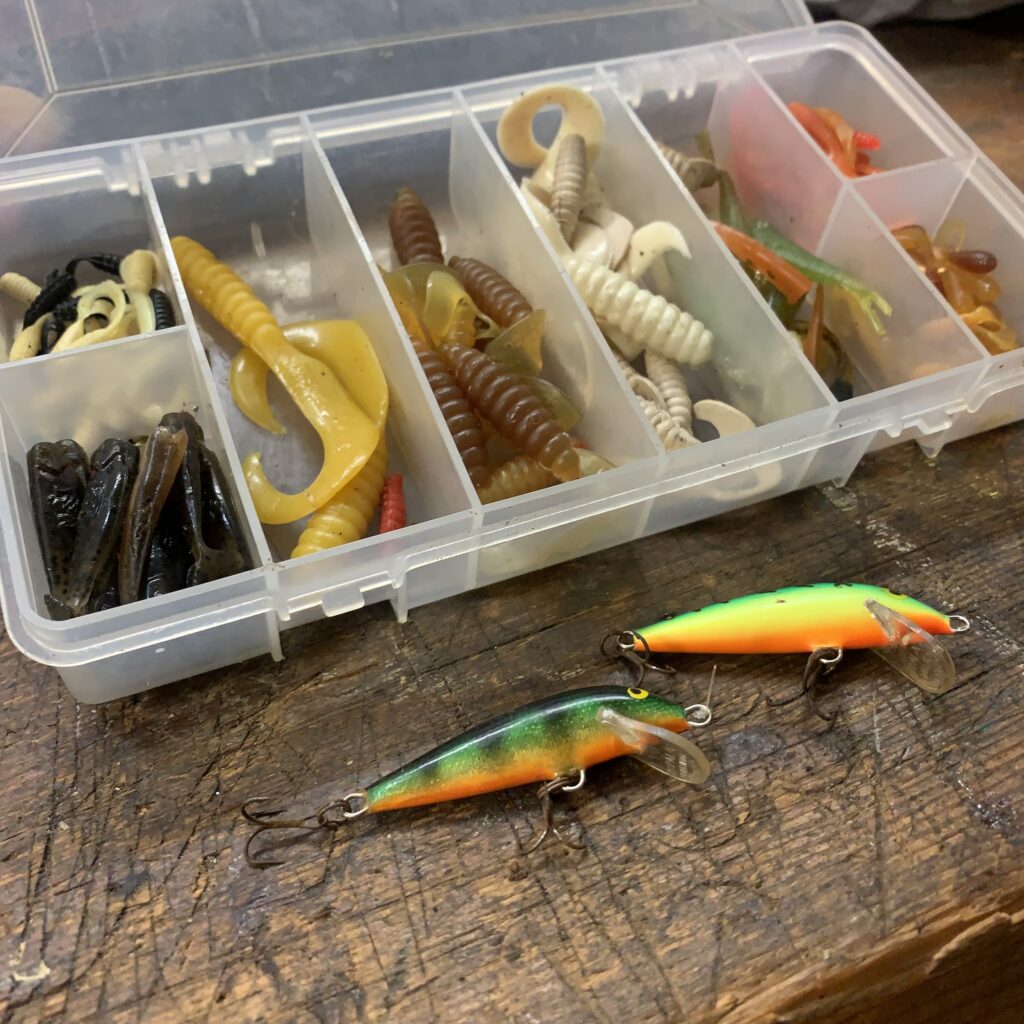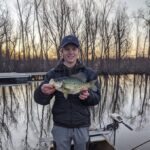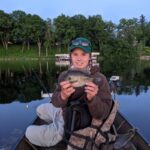Hey there anglers! Any true fisherman knows that fish patterns change throughout the year. Fish move, the forage changes, and your lures should change as well. Crappie can be a difficult fish to catch at times, but using the correct lure can drastically increase your chances of success. If you’re looking to up your crappie fishing game, you’re in the right place. Whether you’re an experienced crappie fisherman or just starting out, this guide will provide you with a list of the best crappie lures for each season.
As always, fishing education and conservation are our priorities here at The Angler’s Line. Feel free to sign up for our free newsletter to join our community and stay up to date! Lets get started!
When Are You Fishing?
Spring Crappie Lures
When you here spring, think shallow. Crappie move from the deep water and into the shallows to spawn this time of year. During this period, I focus on small insect and minnow profiles. Remember that the forage is small this time of year, so match the hatch with your presentation.
Slip-Bobber
Whenever you see spring crappie fisherman, you seldom see any without a slip bobber rigged up. This is one of the most effective ways to fish for crappie in the spring. Use either live bait with a bare hook or a soft plastic on a jig head. The slip bobber excels when you already have a school of crappie located and you’re looking for a few more bites. This is not a technique to use to cover water and find fish.
Paddle Tail Swimbaits
You’re going to notice that paddle tails come up several times in this list, and there’s a reason why. Crappie love feeding on minnows and paddle tail swimbaits do a great job of imitating them. For crappie, choose paddle tails between 2″ to 3″ in length. Pair this with the lightest jig you can get away with in the spring. Either tungsten or lead jig heads will work just fine. Make long casts and use a steady retrieve in the spring. Swimbaits are a great lure to use when fish are scattered and you need to cover water to find them.
Summer Crappie Lures
As the water heats up in the summertime, crappie abandon the shallow water and head deep. With the warmer water temperature comes a higher metabolism. Crappie are aggressive and willing to chase baits this time of year, so use that to your advantage.

Curly Tail Grubs
Curly tail grubs have a lot of movement in the water, which is ideal for warmer water temperatures. When fishing crappie, choose grubs between 2″ and 3″ in length. Match your grub to either a tungsten or lead jig head. Choose a slightly heavier jig head than you would have in spring to make your presentation drop quicker and fish more aggressively. Curly tail grubs excel along deep weed lines or flats in the summer.
Beetle Spins
Beetle spins work well in summer since they create a lot of flash and vibration in the water. I favor beetle spins on sunny and windy days for this reason. They excel when fished along weed edges or around submerged timber. The wire on the beetle spins acts as a sort of weed guard, which prevents you from continually getting snagged in these areas.
Tubes
Tubes work for a variety of species, and crappie are no exception. When fishing tubes in the summer for crappie, choose slightly heavier weights. Tubes work great in the summer when fished aggressively.
Fall Crappie Lures
As temperatures start to cool back down come fall, crappie often feed aggressively before winter arrives. They can be found in deeper water near their wintering holes. Look for main lake basins or depressions that reach about 20-30 feet at the deepest point. Use your electronics to find schools of fish in this deep water in the fall.
Paddle Tails
Once again, paddle tails are a key player when in comes to crappie fishing in the fall. Paddle tails mimic baitfish, which is the main forage of crappie leading up to winter. In the early fall, use heavier weighted jig heads and fish aggressively. As the fall progressive, transition to a lighter jig head and more finesse approach with your swimbait.
Micro Crankbaits
Micro crankbaits are a great way to cover water when crappie are scattered in the fall. A lot of the time, fish scatter after the fall turnover. Crankbaits are load and aggressive and draw fish in from a distance. Use this to your advantage when faced with scattered crappie in the fall.
Spoons
In the late fall, spoons come into play for crappie. Later in the season, crappie began grouping up in deep water and in large schools. Your electronics are critical to locate and stay on these groups of fish. Vertically jig a spoon over the tops of these schools and pick off fish.
Winter Crappie Lures
When the cold sets in, it’s time to switch up your tactics. With cold water comes a slower metabolism, making crappie less inclined to chase down a meal. Subtle presentations are your secret weapon here. Look for crappie in basin areas that reach between 20 – 30 feet in depth. On deep clear lakes, focus on shallow flats that still have green weeds.

Tungsten Jigs
Tungsten jigs are one of the most versatile lures you can use when ice fishing for crappie. I recommend a tungsten jig between 1/32 oz and 1/16 oz. Tip your tungsten jig with either your choice of live bait or plastics. Quiver your rod tip and vary your cadence until you find something that the crappie respond best to.
Spoons
Ice fishing spoons not only work well for game fish, but also are great options for crappie. Most angler know how much crappie like minnows, and spoons are a great imitation. I recommend a spoon between 1/32 oz and 1/8 oz in the winter. Although not necessary, feel free to tip the treble hook with your live bait of choice for some added scent.
There you have it – the best lures for crappie fishing for each season. Remember that these are not hard rules, but instead recommendations to get you on the right track. The most important thing when it comes to choosing a crappie lure is matching the hatch. So put your newfound knowledge to the test the next time you’re out on the water. Tight Lines!
More Panfish Fishing Articles:
- Lure Talk: Best Crappie Lures For Each Season

- Ice Fishing For Crappie: Everything You Need To Know

- Slip Bobber Crappie Fishing: Everything You Need To Know

- Summer Panfish Fishing: Everything You Need To Know

- Ice Fishing For Panfish: Everything You Need To Know

- Fall Panfish Fishing: Everything You Need To Know

